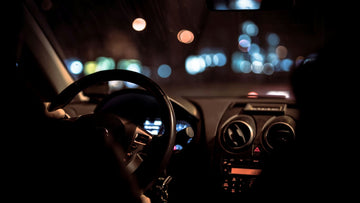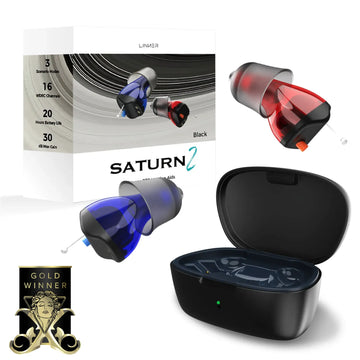Driving requires specialized eyewear to ensure safety and comfort. Daytime driving needs protection from bright sunlight, while nighttime driving requires reducing glare from headlights. Understanding the differences between sunglasses and night driving glasses is essential for selecting the right eyewear.
When it comes to ensuring safe and comfortable driving, choosing the appropriate eyewear is crucial. During the day, bright sunlight can cause discomfort and hinder visibility, making sunglasses a necessary accessory. At night, oncoming headlights and poorly lit roads present their own set of challenges. Here is where night driving glasses come into play, designed to enhance contrast and minimize glare for clearer vision in low-light conditions.
Understanding different eyewear needs for drivers
Daytime driving requires addressing the intense glare caused by direct sunlight. Regular sunglasses are equipped with dark lenses that effectively block UV rays and reduce brightness, preventing eye strain and discomfort. These sunglasses are essential during sunny days to maintain clear vision and protect your eyes from harmful radiation. Polarized lenses further enhance this protection by eliminating reflections from surfaces like water or asphalt.
Conversely, nighttime driving introduces different obstacles, such as glare from headlights and streetlights, which can cause temporary blindness or discomfort. Glasses for night driving are specifically designed to counteract these issues. They incorporate anti-reflective coatings to minimize glare and yellow-tinted lenses that enhance contrast in low-light situations. This technology significantly improves clarity and reduces the likelihood of accidents during nighttime travel. Many drivers also rely on night vision glasses for driving or the best anti glare night driving glasses to achieve a clearer, more comfortable view of the road when visibility is poor.
While regular sunglasses excel in daylight conditions, they do not address the specific needs of night driving. Choosing specialized eyewear like night time driving glasses tailored to these different environments ensures you maintain optimal vision regardless of the time of day.
Exploring the Technology Behind Specialized Lenses
The technology embedded in glasses for night driving focuses on improving visibility under challenging conditions. One key feature is the anti-reflective coating applied to the lenses, which diminishes reflections from artificial lights. This reduction in glare leads to less eye strain and a clearer view of the road ahead. Additionally, these glasses are often equipped with yellow-tinted lenses that boost contrast by filtering out specific wavelengths of light that cause visual distortion.
Drivers looking for superior performance often turn to the best anti glare night driving glasses or night vision glasses for driving, both of which are designed to enhance contrast and minimize eye fatigue during long trips. These innovations make night time driving glasses a valuable investment for those who regularly drive in dimly lit environments or adverse weather conditions.
This contrasts with traditional sunglass lenses that are primarily designed to block ultraviolet rays and reduce sunlight intensity. Sunglasses utilize tinted or polarized lenses to achieve this effect, creating a comfortable experience during daylight hours but offering little benefit at night. Therefore, while both types of eyewear serve protective functions, their applications differ significantly based on environmental conditions.
Understanding these technological distinctions helps drivers select eyewear that aligns with their specific needs—whether it’s shielding against sun glare or enhancing visibility during nighttime journeys.
The Advantages of Using Yellow-Tinted Lenses
Yellow-tinted lenses have gained popularity due to their unique optical properties. By enhancing contrast and depth perception, these lenses provide a sharper image in low-light settings such as dusk or cloudy evenings. They filter out blue light, which tends to scatter more than other colors, reducing haze and enhancing clarity.
Compared to dark sun lenses, which primarily focus on blocking sunlight, yellow-tinted lenses offer superior benefits for nighttime use. While dark lenses can make night driving more challenging by further diminishing available light, yellow tints allow more light into the eyes without compromising glare reduction. This makes them ideal for those using glasses for night driving or night vision glasses for driving, as both options enhance visual clarity under artificial lighting conditions.
Utilizing these specially designed lenses or the best anti glare night driving glasses can significantly improve your night driving experience by offering clearer vision and reducing fatigue caused by prolonged exposure to headlights and streetlights.
Selecting Appropriate Eyewear Based on Your Driving Needs
When choosing eyewear for driving, consider factors such as comfort, fit, and lens technology tailored to your specific requirements. For daytime use, opt for sunglasses with polarized or UV-blocking lenses that ensure full protection against sun exposure while maintaining style and comfort.
If you frequently drive at night or in dimly lit areas, investing in night time driving glasses or glasses for night driving is advisable. Look for features like anti-reflective coatings and yellow-tinted lenses that offer enhanced clarity and reduced glare. The best anti glare night driving glasses and night vision glasses for driving contribute to safer travel by minimizing distractions caused by bright headlights or poorly illuminated roads.
By selecting the right eyewear, you can enhance your driving experience, ensuring safety and comfort regardless of the time of day.






![Linner Mercury Clarity OTC Hearing Aids [FSA & HSA Eligible] Linner](http://www.linnerlife.com/cdn/shop/files/Linner-Mercury-Clarity-OTC-Hearing-Aids-_FSA-_-HSA-Eligible_-Linner-110038953.webp?v=1725853434&width=360)

![Linner Mars OTC Hearing Aids [FSA & HSA Eligible] Linner](http://www.linnerlife.com/cdn/shop/files/Linner-Mars-OTC-Hearing-Aids-_FSA-_-HSA-Eligible_-Linner-110039213.webp?v=1725865495&width=360)
